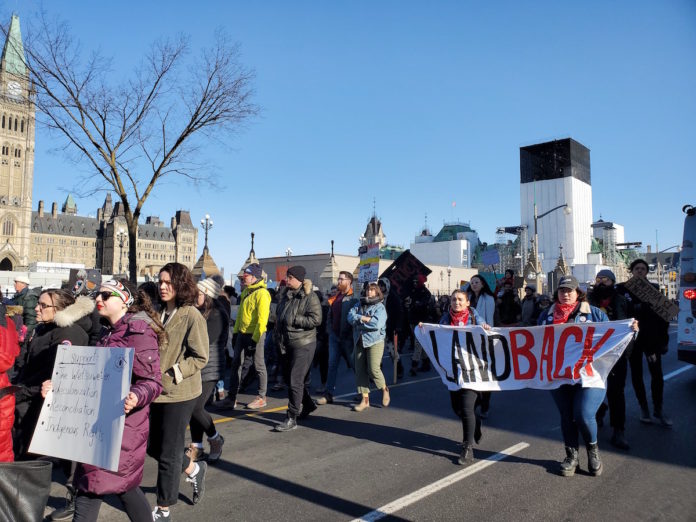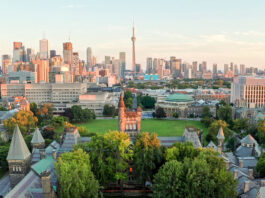Almost 1,000 Wet’suwet’en sovereignty supporters took to the streets of downtown Ottawa on Feb. 24, where Indigenous youth led the way as land defenders.
The rally is one of the many events that took place across the country over the past several weeks, as Indigenous peoples and their allies demand the federal government listen to Wet’suwet’en hereditary chiefs and halt the production of the Coastal GasLink pipeline.
A shared belief that was expressed by several land defenders interviewed is in the self-governance of the Wet’suwet’en, and all Indigenous nations: including Indigenous land and people not under a band council connects the youth at these protests.
“Canada couldn’t go build a pipeline in Sweden just because it feels like it. It is the same thing,” said Cricket Guest, a youth organizer from Toronto.
However, the fight that many of these youth are participating in does not come without personal risk.
“This is a movement largely led by Indigenous youth. So it is putting Indigenous youth in the forefront and in the media–which is great that our voices are being elevated however, it does put us at a bigger risk of being targeted,” said Guest.
She said that her experience being treated as an Indigenous woman, often by strangers who might not have known her ancestry, came from her speaking out and representing her culture with pride.
Despite the personal risk, her resolve remained as she explained her vision for Canada’s future–settlers holding their government accountable and Indigenous nations being treated as sovereign nations.
Dani Lanoette, whose ancestors’ bones are buried underneath the Parliament building in an ancestral burial ground, emphasized the Indigenous youth’s building momentum. She started off at 15, getting involved with the Idle No More movement.
External politics is not the only relationship land defenders must navigate–there are also the alliances that form with activists of all kinds.
“We see a lot of settler allies coming out and supporting us in our actions to protect the land, which is really great. But, there needs to be a bigger Indigenous voice,” said Lanoette.
“Why are hundreds of thousands of people showing up for the Montreal climate march but we have had a few hundred people here?”
Theo Capeling, a settler ally and climate activist spoke about why young people of every ancestry are showing up for Indigenous self-governance.
He said he believes young people are “free thinkers,” as a byproduct of information accessibility.
“I think that is why this movement has grown so large–because Indigenous youth are at the forefront. And they are so strong, have so much energy and so much strength that they are willing to make themselves heard, and they are willing to bring along all the settler youth with them, who are willing to listen,” said Capeling.
The fight for Indigenous rights is something that Madeline Ienerahtahawi Kelly, a youth organizer, plans on continuing in the future.
“For Indigenous sovereignty to be honoured–that includes treaties honoured and the fact that land is unceded to be honoured by Canada,” she said.
“I think young people care about human rights violations. I think young people are extremely smart–and powerful, and beautiful. I think a lot of young people care about environmental rights and human rights.”
Feature image by Morgana Adby.




